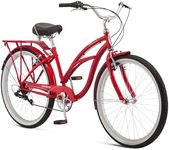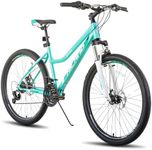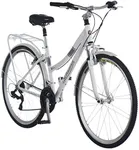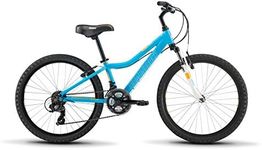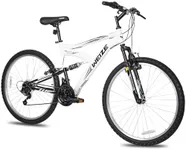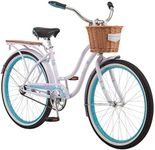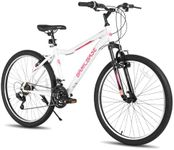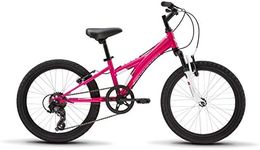Buying Guide for the Best Womens Bikes
Choosing the right women's bike involves understanding your specific needs and preferences. Whether you're looking for a bike for commuting, fitness, or leisure, it's important to consider various factors that will affect your comfort, performance, and overall experience. Here are some key specifications to consider when selecting a women's bike, along with explanations to help you make an informed decision.Frame MaterialThe frame material of a bike affects its weight, durability, and ride quality. Common materials include aluminum, steel, carbon fiber, and titanium. Aluminum is lightweight and affordable, making it a popular choice for many riders. Steel is heavier but offers a smooth ride and is very durable. Carbon fiber is very light and provides excellent performance but is more expensive. Titanium combines light weight and durability but comes at a higher cost. Choose a frame material based on your priorities: if you need a lightweight bike for speed, consider aluminum or carbon fiber; if comfort and durability are more important, steel or titanium might be better.
Bike TypeThere are various types of bikes designed for different purposes, such as road bikes, mountain bikes, hybrid bikes, and cruiser bikes. Road bikes are designed for speed and efficiency on paved roads, making them ideal for commuting and long-distance rides. Mountain bikes are built for off-road trails and rough terrain, with features like suspension and knobby tires. Hybrid bikes combine elements of road and mountain bikes, offering versatility for both paved and unpaved paths. Cruiser bikes are designed for comfort and leisure, with an upright riding position and wide, cushioned seats. Choose a bike type based on where and how you plan to ride most often.
Bike Fit and SizeThe fit and size of a bike are crucial for comfort and performance. Bikes come in various sizes, typically measured by the frame size. A proper fit ensures that you can ride comfortably and efficiently, reducing the risk of injury. To find the right size, consider your height and inseam length, and refer to the manufacturer's size chart. Many bike shops offer fitting services to help you find the perfect size. Test riding different sizes can also help you determine which feels best. Prioritize a bike that fits well to ensure a comfortable and enjoyable riding experience.
GearingGearing refers to the number of gears a bike has, which affects how easy or difficult it is to pedal in different conditions. Bikes can have single-speed or multiple gears. Single-speed bikes are simple and low-maintenance, ideal for flat terrain and short distances. Bikes with multiple gears offer more versatility, allowing you to tackle hills and varied terrain with ease. The number of gears can range from a few to over 20. Consider the terrain you'll be riding on and your fitness level when choosing gearing: if you plan to ride on hilly terrain or need more flexibility, opt for a bike with more gears.
BrakesBrakes are essential for safety and control. Common types include rim brakes, disc brakes, and coaster brakes. Rim brakes are lightweight and affordable, but their performance can be affected by wet conditions. Disc brakes offer better stopping power and performance in all weather conditions, making them a popular choice for many riders. Coaster brakes are found on some cruiser and city bikes and are engaged by pedaling backward. Choose brakes based on your riding conditions and preferences: if you ride in varied weather or need reliable stopping power, disc brakes are a good choice; for casual, fair-weather riding, rim or coaster brakes may suffice.
SuspensionSuspension helps absorb shocks and provides a smoother ride, especially on rough terrain. Bikes can have front suspension (hardtail), full suspension, or no suspension (rigid). Hardtail bikes have suspension only in the front, making them lighter and more efficient for climbing and pedaling. Full suspension bikes have both front and rear suspension, offering maximum comfort and control on rough trails but at a higher weight and cost. Rigid bikes have no suspension, making them lighter and more efficient on smooth surfaces. Choose suspension based on the terrain you'll be riding: for off-road trails, consider hardtail or full suspension; for paved roads and smooth paths, a rigid bike may be sufficient.



